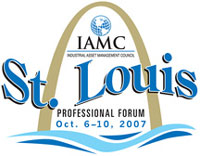 |
|||||||
|
|
Behind the Governor’s Cup
he Governor’s Cup, one of the themes in this month’s issue of Site Selection, focuses our attention on the states that have been the most successful in locating new business within their borders. There are typically several key factors in the decision to locate or expand an industrial facility at a specific location. One of the most commonly cited key factors is the presence and reliance upon a pool of educated, highly skilled, industrial technicians. Simply put, in today’s global economy, the domestic facility and its work force must “do it smarter and better” than its off- shore competition. A couple of generations back, the development of this pool of skilled laborers was relegated to the high school. High school, and often times even the junior high schools, had sheet metal, woodworking, electrical, and automotive shop classes. A generation back, the emphasis seemed to shift to the regionalized and expanded vocational- technical schools. More recently, the emphasis seems to have shifted to a mutual effort between the local and regional vocational- technical schools and local or state colleges and universities.
Often times, we hear that the non- competitive wages have driven a plant, company, or industry off- shore in search of lower production costs. Wages, Social Security, health care costs, union work rules, governmental regulations, tariffs, taxes, currency fluctuations, and a host of other factors all tend to complicate the analysis. However, the bottom line still remains the bottom line. If the fully loaded unit cost of production is more at a domestic plant than at an off- shore operation, the plant will close and production jobs will be lost. Conversely, if the fully loaded cost of production at a domestic facility is less than at an off- shore facility, new plants will open and new production jobs will result. While many of these factors like Social Security, federal regulations, tariffs, currency fluctuations, etc. are beyond the direct control of the individual states, education is not. Funding and support for general education, customized job training, vocational- technical schools, colleges and universities are all directly impacted by the state’s efforts. Modern construction techniques, computerized manufacturing, robotics, automated storage and retrieval systems, and the like, all increase efficiency and drive down the unit cost of production. This only happens in the presence of an educated, highly skilled, industrial work force. When we recognize the “winners” in the Governor’s Cup, we should also recognize one of the key factors that lies behind the cup: a strong and longstanding commitment to education.
|
||||||
©2007 Conway Data, Inc. All rights reserved. SiteNet data is from many sources and not warranted to be accurate or current.
|



